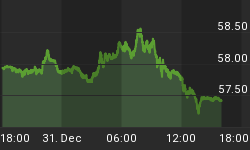"A lie has speed, but truth has endurance." - Edgar J Mohn
Desperate times call for desperate measures, yet it appears our leaders have failed to understand what is meant by desperate measures. Rather than seek the truth on which real, organic growth is built, our failed leadership would rather engage in spin. They would rather build confidence at the expense of real solutions to real problems. The Fed and DC are truly desperate and never was it more clear than during Bernanke's interview on 60 Minutes in December (the quivering voice only adds to that view).
"QE will drive down interest rates" (10 year yields are up 100 bp since August)
"We are not monetizing the debt"
"We can raise interest rates in fifteen minutes"
The Fed's game of spin has been successful in the short term. Many believe the economy is truly doing well. They believe rising yields are a sign of economic health. They believe the job market is improving when "real job growth" (adjusted for population) was 32,000 jobs in February and negative in prior months. They believe the consumer is strong, the banking system well capitalized and corporate profits will continue to grow. There is one market that has not been fooled. One market that is clearly signaling a contrary view to that of the Fed.
We've all been lied to before. Leaders will always lie and rarely, if ever will they be held accountable. It is a sad reality of society. Bernanke though is doing more than lying. He is engaging in a very dangerous game, one that if he gets wrong could literally implode the global economy. He is challenging the bond market. The risk to a failure in the $458 trillion interest rate derivative market (8 times greater than global GDP) is very real. The risk to bank balance sheets (a 100 bp rise in 10 year treasuries equates to an 11% drop in home prices) is very real. Rising inflation is very real.
The following chart shows inflation expectations based on the difference in TIPS yields (considered real as they are inflation adjusted) and treasury yields (considered nominal). In the summer of 2010 deflation was a real threat based on expectations. That quickly reversed in August of 2010 at the hint of QE2. Since that time expectations have trended much higher and are now well above the 2% Fed threshold.

How does the Fed plan on reversing this trend? Any hint of removing QE (a pause in June is probable) will bring back the risk of deflation, something they fear beyond words. The only thing they can do is the game of spin. They must build confidence. They must deny the reality of rising food prices. The reality that corporate margins may have peaked in the face of rising input costs. The reality that $100 oil may be just the beginning. If you listen to the Fed over time you see their growing desperation as they continually change the bar of success with QE. Rising rates are now spun as a sign of economic health. Rising food prices are spun as driven by demand not monetary policy. In 2010 they referenced TIPS as a sign of low inflation expectations but no longer.
"U.S. consumers' expectations of future inflation are currently stable." Bill Dudley, March 2011.
"low 1.5% year-on-year CPI (referencing that inflation is within the Fed mandate)." Ben Bernanke, February 2011.
From the man who said "subprime is contained" are we to believe in his ability control inflation before it chokes off any economic growth? The real question is can the speed of his lies outlast the endurance of truth?
















